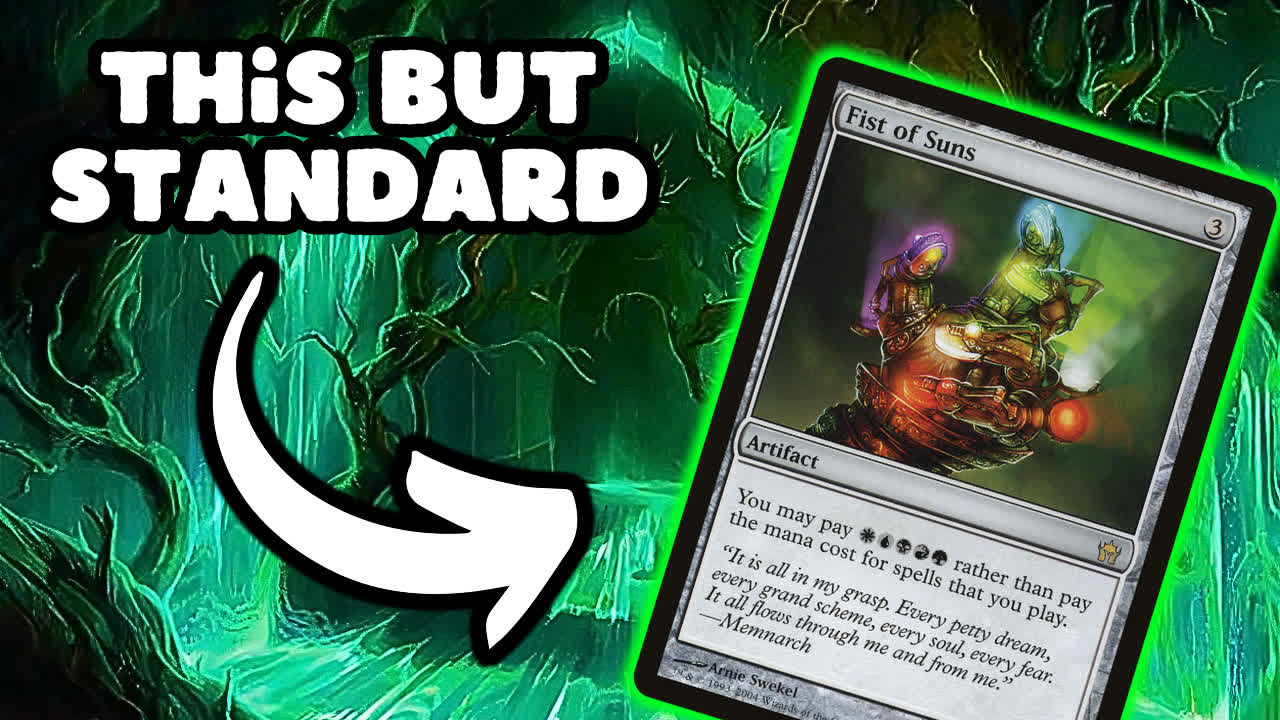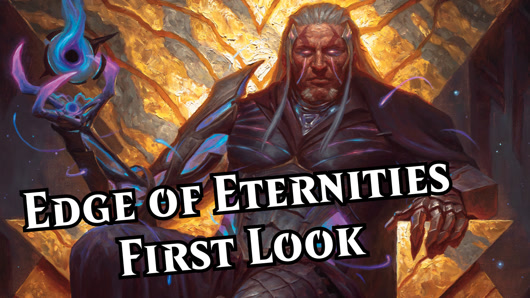Today's deck is nothing short of a disaster, but a beautiful disaster that has brought me a lot more joy than other decks I've been playing recently. The deck is all-in on doing gigantic silly things with exorbitant mana costs that would generally be more unattainable than a poorly named plot contrivance in Avatar; but we can get there due to a deceptively powerful Leyline that, as of this writing, is still legal in Best-of-One… and will continue to be because I'm talking about Leyline of Mutation.
The Cornerstone
Leyline of Mutation, like any Leyline, can start the game on the battlefield if it's in your opening hand but it would cost four otherwise. Generally, this mana disparity means they're useless if they aren't in your opening hand because the effect can't be game-breaking if it's on the battlefield at the start of the game, but four mana is a significant cost.
Fortunately for us, this Leyline actually works okay in our deck even if we have to play it out later in the game because the alternative cost it gives our spells will be a reduction of three or four. If we use it twice, it more than pays for itself, and if it's in our opening hand: bonus! We're effectively playing with Fist of Suns in Standard, and I love it.
The Payoffs
There are a number of gigantic bombs in Standard that are prohibitively expensive to take advantage of this interaction. Portal to Phyrexia and One with the Multiverse are permanents that are unplayable if you have to pay full price, but work great if you can cheat them in one way or another. Additionally, One with the Multiverse supports our deck's density of huge bombs by allowing us to dig through our deck Future-Sight-style and play one of our other bombs for free.
Valgavoth's not only eating terror, he's also eaten his way into my heart. Okay, maybe that was an off-putting visual, but the point stands. This demon is a next-level threat that can take over a game if left unanswered and, fortunately, his ward means he's rarely answered cleanly without a sweeper. The lifelink puts a total stop to aggro and with the Leyline, this can easily hit the battlefield as early as turn four. We also have Atraxa, Grand Unifier in here because she's just as good at stabilizing and giving us card advantage, but I've gushed enough about her over the years, so Val gets top billing here.
The Ideal Curve Out
The ideal curve out has us hitting the Leyline in our opening hand, followed by an Insidious Fungus. This fungus is a very useful addition to Standard decks that want to take their time because it's a bigger speed bump against aggro than you might expect, plus it has removal modes that are more and more relevant. In a perfect world, our opponent won't apply pressure and we can use the last mode and get an additional card plus one of our surveil lands onto the field early.
Overlord of the Hauntwoods is ideally our turn three. Given that our fungus can take care of one of our tap lands, the overlord can accompany another tapped land drop and still come in for three mana. The Everywhere token can help round out our colors and tee up an explosive turn four now that all colors are locked in.
You'll notice we also have Ancient Cornucopia and Up the Beanstalk represented because they're both great at doing what this type of deck needs, and we can fill out our early curve with these as necessary if the ideal doesn't pan out.
Tips for Sequencing
Assuming we've established some ramp and our tap lands are in order, turn four can be any one of our bombs. When it comes to sequencing, always throw One with the Multiverse first as it will let you play another spell for free afterwards and even give you a peek at the next card in your deck.
Always, when possible, lead off with One with the Multiverse, and if you have multiples, play every one of them. Having multiples in play lets you free cast multiple spells in a turn, so make sure to establish these. If you have a follow-up spell, it's straight-up free. Also, if you can be sure to wait to play lands until you've checked the top card of the deck, and don't be afraid to use a surveil land to dig deeper when looking for another bomb.
When it comes to ramp, you will want to prioritize Overlord of the Hauntwoods over Ancient Cornucopia because removal on the overlord leaves Everywhere in place, whereas removing the horn kills your ramp completely.
You'll notice we have a single copy of Elesh Norn, Mother of Machines in the main deck with two more in the side. Against the Overlord Domain decks, she is an absolute killer by neutralizing Leyline Binding and the overlord ETBs. They will prioritize removing her swiftly and often have to use cards like Sunfall to do it, which leaves them with fewer sweepers for when Valgavoth shows up.
If It’s Bad, Why Play It?
I mentioned at the top that this deck is a bit of a disaster, and I kind of meant it. I've played it for a number of hours now and I'm carrying a 40% win rate with it. Please take this as the warning it's meant to be. I love Magic: the Gathering, but the competitive grind on Arena has been exhausting recently and I've been feeling extraordinary fatigue. As such, I wanted to find something that was fun first and foremost, and trying to sequence a turn four One with the Multiverse in the current meta actually proved to be that for me. The stream on Twitch where I debuted this mess was the best stream I've had in a long time and this deck brought out a ton of smiles. It's leveraging cards I've wanted to love that have been overshadowed by more efficient options while making sure every game is a unique puzzle. Also, there is something to be said for going over the top of a traditional Domain list because your top end is superior. I'll never get sick of that, if I'm honest.
If you’re results-oriented, this deck isn’t a good one for you to craft I'm afraid; but if you’re looking for a fun time with some huge spells, this can be a lot of fun. And if you’d rather not craft it yourself, feel free to check out my videos on MTGCircle where I play the deck because there are a lot of crazy matches to be had.
As always, thanks for reading, and happy brewing!
















